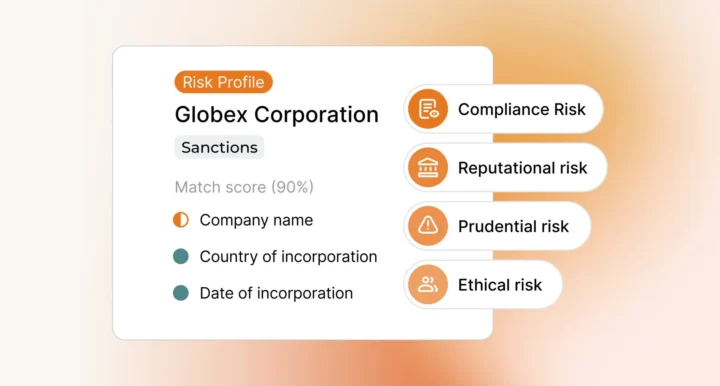Financial intelligence units (FIU) play an important role within many banks in the fight against financial crime by centralizing the investigation and response to financial crime risk events and other issues relevant to supervisory authorities. A bank FIU may be made up of a number of investigative teams specializing in the analysis of customer data that are indicative of money laundering or terrorism financing, sanctions evasion or bribery and corruption.
Some FIUs extend their work to include the investigation of fraud. Banks with operations in multiple countries often have a Group FIU performing a similar role for the entire Group. The term FIU also commonly refers to national-level supervisory authorities and regulators that perform an investigative function and serve to bridge the gap between banks and law enforcement agencies.
With those factors in mind, it is important that banks understand the investigative role that their FIU should perform as part of their risk management infrastructure, and how it may interact with financial authorities when called upon to do so.
What does an FIU do?
The role of an FIU within a bank is to identify, investigate and mitigate financial crime risks. In order to carry out financial crime investigation, a FIU will collect and analyse customer data, and examine key customer AML/CFT information, including internal watchlists and previous investigations, that are generated by a range of Know Your Customer (KYC) and Anti-Money Laundering (AML) measures. This process includes investigating suspicious transactions, changes to customer risk profiles, sanctions alerts, and adverse media stories. Following analysis, the FIU must determine whether the information they have gathered warrants the submission of a suspicious activity report (SAR), or other filing, to the relevant law enforcement authorities.
During their investigatory process, FIUs may liaise with bank compliance employees, or review both private and public data sources to obtain further information on customers. Where permitted, FIUs may also share details of their internal investigations with other banks to understand how individual banks are being exploited by criminal networks. Similarly, FIUs may participate in subsequent investigations, providing support to law enforcement agencies.
The core functions of an FIU are as follows:
Financial Crime investigations: Prior to the submission of SARs to the relevant authorities, FIUs must investigate risk events to determine whether there has been a breach of the law – and whether a law enforcement investigation is needed. Given the amount of data involved in investigations, FIUs should seek to integrate analytic software in order to prioritize their workload, increase accuracy, and ensure the process takes place as quickly and efficiently as possible.
During the investigative process, FIUs may seek supporting material on a particular customer, or may engage internal experts to scrutinize data more closely. FIUs may reference a range of data sources during their analysis, including publicly available company registers, sanctions lists, and adverse media stories. It may be necessary to reference other internal integrations, including transaction monitoring solutions, screening solutions, enhanced due diligence output, and client data stores.
External resources may also be relevant, including publicly available resources such as the Panama Papers, the Paradise Papers, and so on. FIUs must be able to fuse this data into actionable information, resolving information across different sources from which it is drawn in order to establish an actionable case narrative.
AML/CFT reporting: FIUs act as intermediaries between their banks and the authorities. Accordingly, bank FIUs must determine whether it is appropriate to submit a suspicious activity report when their transaction screening solutions detect certain trigger activities. Examples of suspicious activity that should be reported to FIUs include:
- Transactions above jurisdictional AML/CFT reporting thresholds.
- Unusual patterns of transaction, such as transaction in unusual volumes or frequencies
- Transactions with high-risk AML/CFT jurisdictions
- Transactions that do not match a customer’s established risk profile
Supporting investigations: When FIUs complete internal investigations and submit SARs to regulatory authorities, they may be required to share further information with the authorities to support ongoing investigations. Accordingly, FIUs should seek to make their relationship with authorities as efficient as possible in order to address incidents as quickly as possible and to contribute to national efforts to fight financial crime.
Partnerships: To better contribute to the long-term fight against financial crime, bank FIUs should seek to work in partnership with the wider financial community, sharing information, and building relationships not just with law enforcement agencies but other banks and government bodies. In order to operate in compliance with privacy and data protection laws, FIUs should seek to establish parameters for the legal exchange of AML/CFT information (for example, in the UK, by using the provisions of the Criminal Finances Act), become members of regional Financial Information Sharing Partnerships (FISP) such as the Joint Money Laundering Intelligence Taskforce (JMLIT), and participate in industry data exchange platforms such as the SWIFT KYC Registry.
AML/CFT policy: FIUs should work to identify and manage their banks’ AML risks and vulnerabilities, and use that information to establish new compliance policies and targets. FIUs may discover that new approaches clash with established AML/CFT compliance protocol and should seek to find ways to integrate technology solutions that serve the needs of their customers and their institution.
Additional functions: Beyond their investigatory role, FIUs work to support their banks’ efforts to achieve AML/CFT compliance goals. That work may involve:
- Strategic analysis: FIUs may perform ongoing strategic analysis of their bank’s exposure to risk, beyond law enforcement relevance and without an alert being triggered. Strategic analysis may, for example, involve assessment of the risk that AML/CFT related incidents, such as the Paradise Papers leak, entail.
- Monitoring AML/CFT compliance: FIUs may be able to exert some supervisory influence within their banks, monitoring products and services to ensure compliance with AML/CFT regulations.
- Blocking transactions: If it is related to serious criminal activity, or prohibited by a sanction restriction, for example, FIUs may be required to block a transaction from taking place before law enforcement agencies can step in to investigate.
- Training employees: By training employees in the latest compliance rules and regulations, FIUs can improve the flow and quality of the data they receive from their colleagues. Employee training not only improves a bank’s internal AML/CFT compliance performance but deepens individual understanding of the role the FIU plays .
- Conducting research: By initiating and conducting research projects, FIUs can better adapt to emerging criminal methodologies and evolving legislative landscapes – while enhancing their own analytic capabilities.
- Enhancing public awareness: By helping the public understand what it does, and how it combats and investigates criminal incidents, an FIU increases the potential for external cooperation and positively influences the wider fight against money laundering and the financing of terrorism.
Please get in touch to learn more how Ripjar can help Financial Intelligence Units.
Last updated: 16 August 2024





